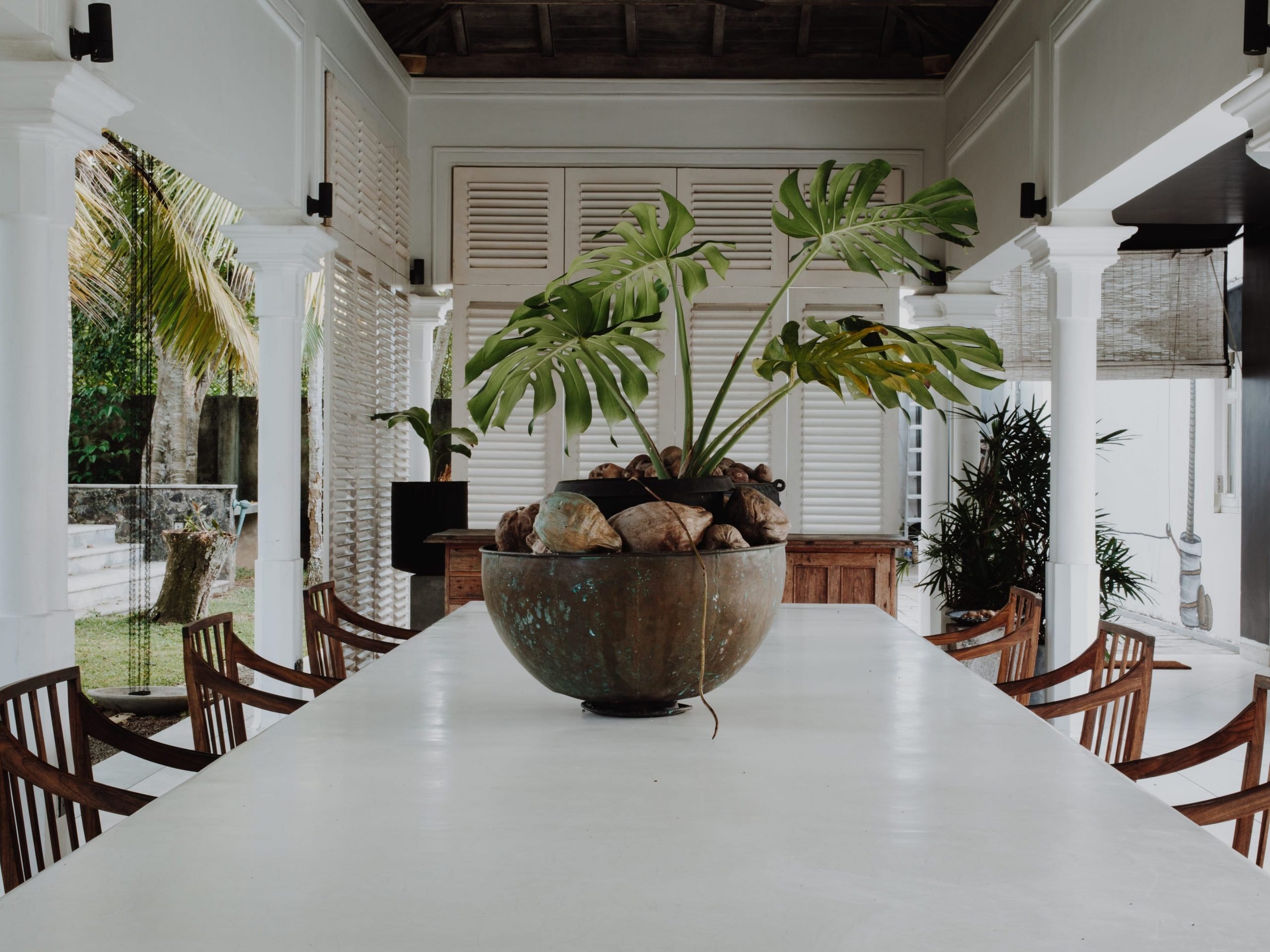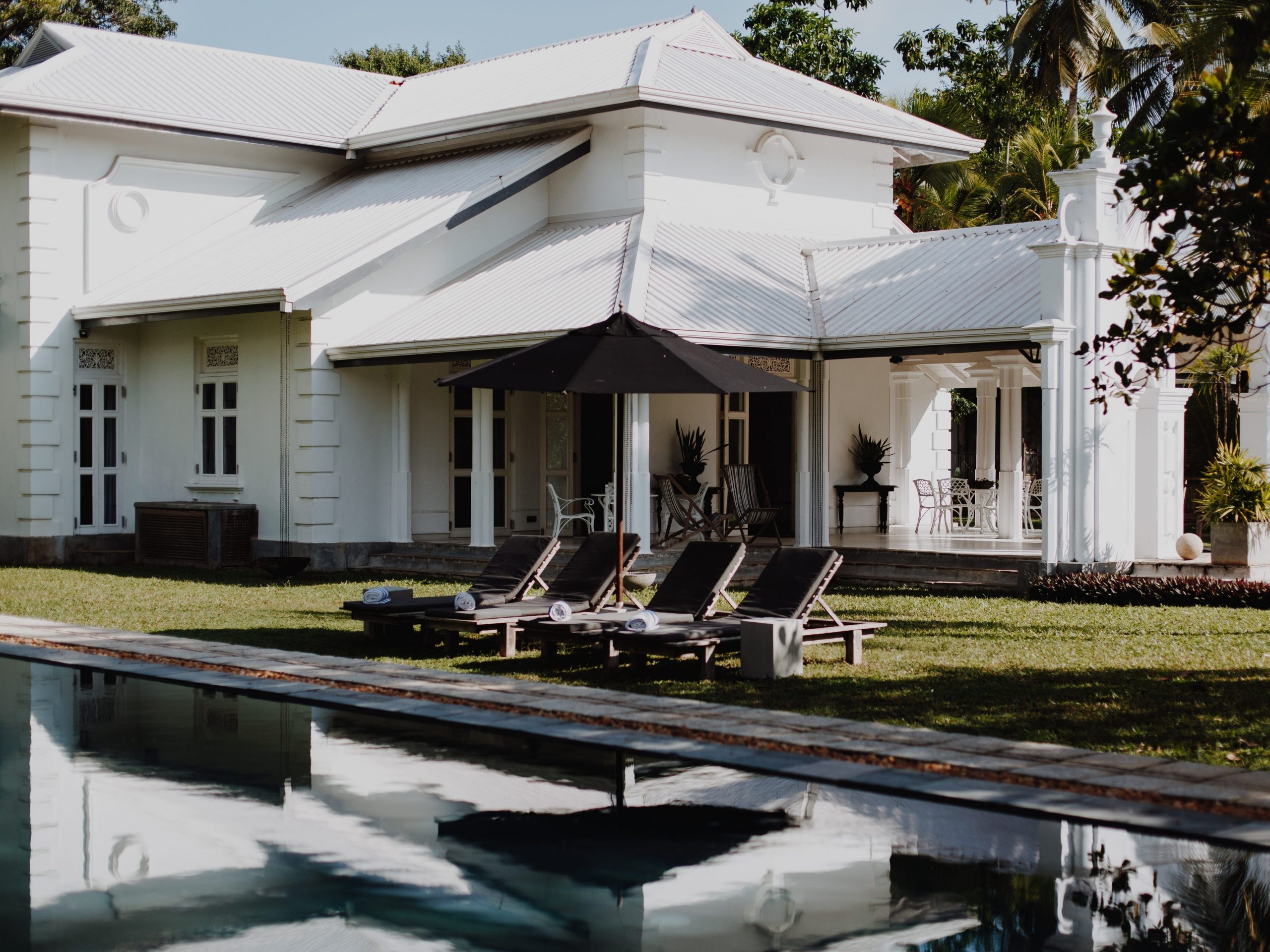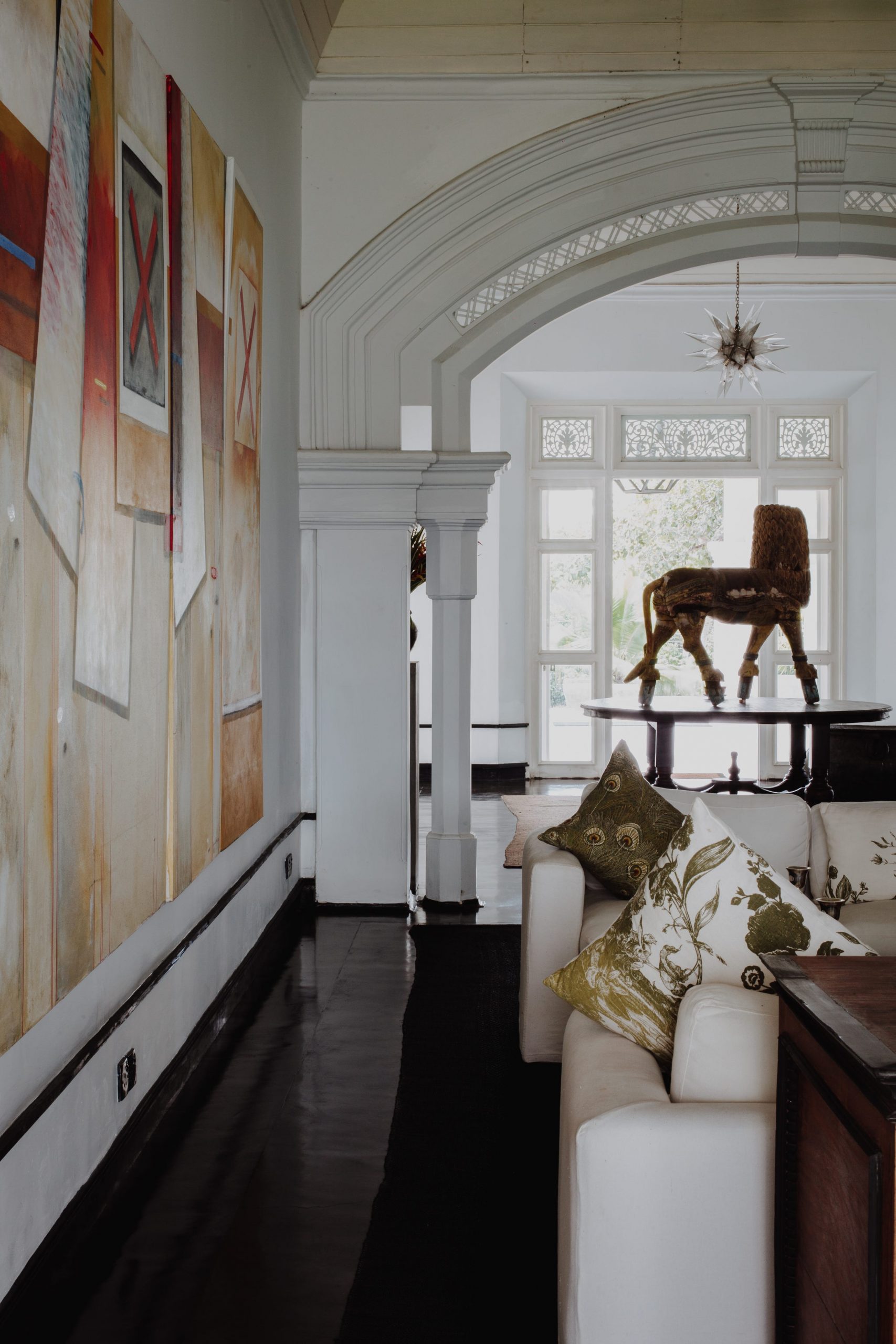
- The son of a wealthy plantation owner built a home in Sri Lanka in 1912 to woo his bride.
- In 2011, four friends bought the crumbling remains of the once-grand villa for $430,000.
- They now rent the mansion out to guests for $1,300 a night.
- Visit Insider's homepage for more stories.
It was in 2010 that interior designer Dean Sharpe first glimpsed the crumbling mansion on the Sri Lankan hillside near Weligama. In its glory days, Halala Kanda – known as Firefly Hill to locals – played host to guests such as Emperor of Ethiopia Haile Selassie and legendary Australian cricketer Keith Miller. The son of a wealthy plantation owner built the mansion in 1912 to woo his bride.
But when Sharpe first saw it, the tired relic with its crumbling plaster looked as if it had been lost to the jungle. The coral and stone walls had collapsed, bats were roosting in the rafters, the windows were boarded up, and a tree was growing through the roof of the entryway.
"It was a ruin of what it once was," Sharpe told Insider. "But we walked in and fell in love with it."
In 2011, he bought the crumbling, 100-year-old villa and two acres of land for $430,000 along with his friends Jenny Lewis, Richard Bleasdale, and Bentley de Beyer.
Sharpe was tasked with creating the look of the villa, which wrapped around an open-air courtyard. The group commissioned architect Ross Logie to bring their dreams to reality.
Work began in December 2012, a full 100 years after it was built. "We wanted it to look as authentic as possible," said Sharpe. "But we didn't want to create a pastiche of what went before."

Courtesy Halala Kanda
Maintaining the bones
Because the friends wanted to keep as much of the original building as possible, they considered every piece of the home carefully before scrapping it: "We didn't do a big bonfire and burn everything. Each window frame and roof joist was carefully removed and stacked," said Sharpe.
There were certain parts of the villa they couldn't hold onto. The grand entrance was crumbling and the tiled roof of the kitchen wing had caved in. Termites had attacked the plaster, which meant the builders had to scrape the walls back to the original coral and stone structure.
"The demolition took four months to complete," said Sharpe. "The builders were concerned as they needed to get the tarpaulin on the roof to protect it from the monsoon season." He declined to share how much they spent on renovating the property.
Sharpe replaced the roof with white corrugated iron to reflect the heat and give the home a contemporary look. It also helped monkey-proof the roof: "The tiles had been replaced in the 1950s, so they weren't turn of the century. We needed to protect it as it's a bit of a monkey freeway," Sharpe said.

Courtesy Halala Kanda
Modern additions
Previously, the well in the garden had been the villa's only source of water, but the friends arranged for it to be connected to the local mains. They also installed air-conditioning, plumbing, and electrical systems. By 2014, the house was in liveable condition, though work was ongoing.
Logie's plans for the house followed the original footprint of the house, but they made the internal rooms more functional. Logie created sightlines in the house that gave every room a vista. He also installed a 23-meter-long saltwater pool in the garden, an art nouveau-style folly, and built staff quarters into the hillside.
Logie told Insider the biggest challenge was ensuring the qualities of the original were not lost through renovations.
"I think we achieved this goal by matching the spirit of the existing villa with harmonious, yet contemporary, additions," he said. "For example, the swimming pool and pool pavilion are clearly designed for modern living, yet the pool pavilion shares a fluid style of early 20th century art nouveau."

Courtesy Halala Kanda
Surprises at every turn
"When we cut back the jungle undergrowth we found a cashew grove, mango orchard and coconut trees," said Sharpe. "It was like we'd discovered a secret garden." The friends also planted coffee and tea bushes, pineapple and citrus groves, and pepper and cinnamon vines.
In the 1950s, the mansion featured pastel-colored walls, but Sharpe decided to let the architecture shine with a simple monochrome theme. He chose not to paint over the wooden rafters, as was fashionable before, instead leaving them bare so the artistry could be on display.
When it came to decorating, Sharpe scoured the Sri Lankan countryside for antiques and had others made by local artisans. He commissioned a carpenter who had recently returned from working on hotels in Abu Dhabi to make the sofas and four-poster beds for the mansion.

Courtesy Halala Kanda
The antique sourcing trips gave rise to the Room of Curiosities next to the entrance of the house. "It features buys we've collected and items that people have left for us. The idea is that it gets added to," said Sharpe. Curios include a hexagonal wood table inlaid with tropical woods found in Sri Lanka, as well as chess sets, street puppets, and books.
"The Room of Curiosities is my favourite place in the house. I like to sit and read or listen to music and hear the buzz of the house - from the people in the pool, to the clatter in the kitchen," said Sharpe.
The friends now rent the villa to guests for $1,300 per night. TV presenter Jaala Dyer from New Zealand rented the villa in 2018 with friends from Singapore.
"Every now and again you stumble onto something truly special. That's the perfect way to describe Halala Kanda," Dyer told Insider. "It's architecturally interesting and luxurious, without being clinical and stark. Everywhere you sit in the house just feels right."
While the pandemic put a stop to international tourism, families from Sri Lanka were able to enjoy the villa. The sustainable tea plantation on the property also helped cover some of the costs of keeping the villa running.
While they still want to make changes to the house, such as creating a new family suite, it has already given them a lot of pleasure, said Sharpe. Even before they finished the renovation, it played host to Ben's 40th birthday party. "There have been lots of wonderful little moments," said Sharpe.

Courtesy Halala Kanda
Editor's note: If you're an APAC-based freelancer who wants to write stories like this one about real estate and design, email me your pitches at [email protected].
